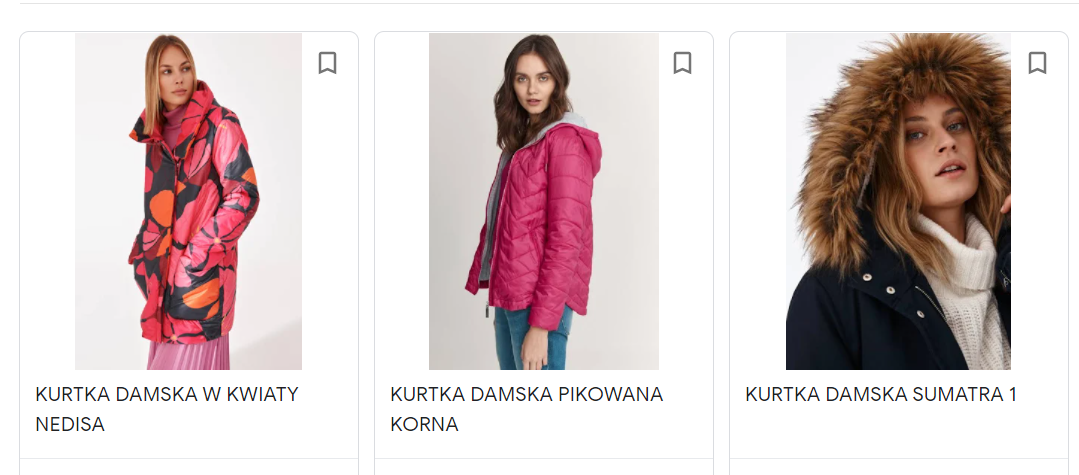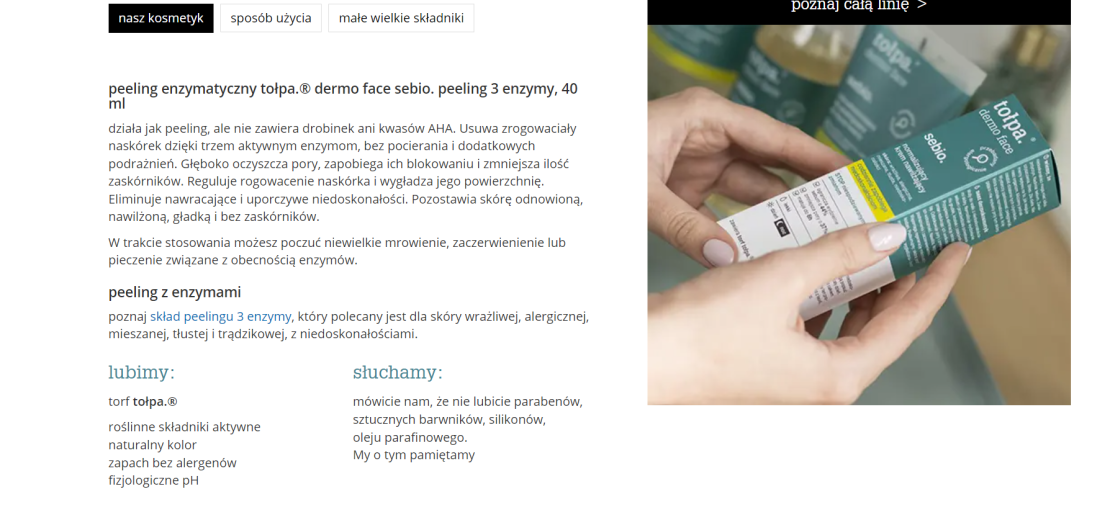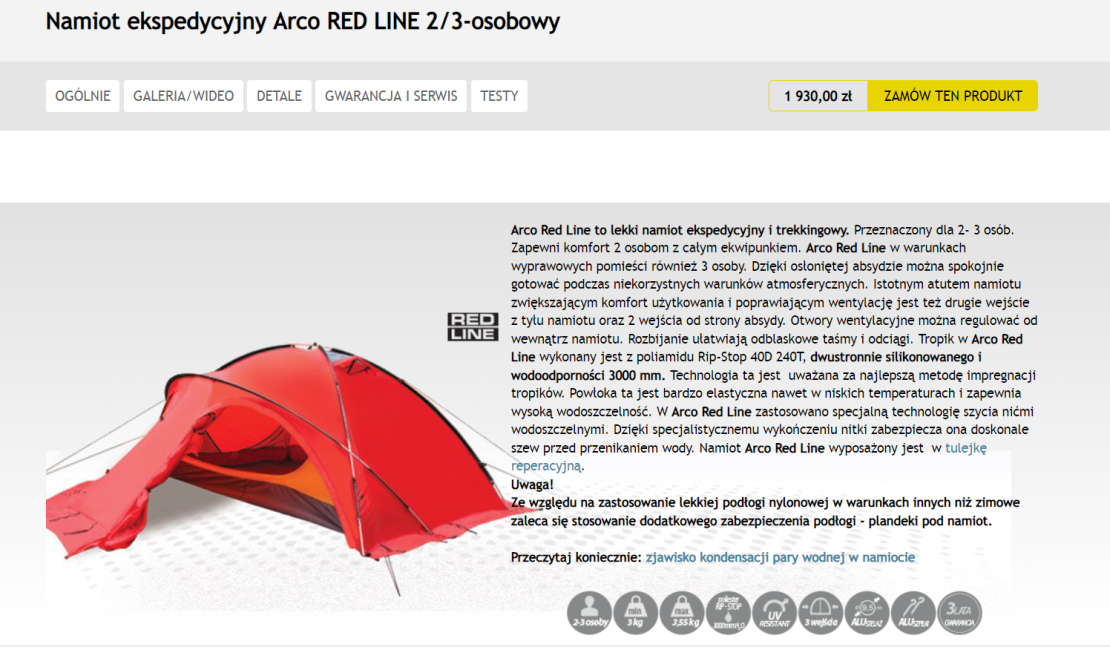Table of contents
Czytasz teraz:
Product Descriptions in an Online Store – Step-by-Step Guide
- Product Description in an Online Store – What Role Does It Serve?
- Creating Product Descriptions – Learn Who Your Customers Are
- Create Your Ideal Customer
- People Buy Emotions, Not Products
- Product Descriptions for Online Stores Crafted with a Benefits Language
- How to Create Perfect Product Descriptions in an Online Store?
- Show what can't be touched
- Product Description: How to Increase Conversion?
- SEO product descriptions
- Duplicate content
- To delegate or write yourself?
Close
Why is your competition selling more even though you have a more extensive range of products, high-quality product photos, and better customer service? They probably have something you overlooked – compelling product descriptions in their online store. Ones that not only present the product in a simple and accessible way but are also excellently optimized for SEO.
If you want to surpass the competition, read our guide and start creating product descriptions that sell.
Product Description in an Online Store – What Role Does It Serve?
In a physical store, customers rely on assistance from the salesperson. Friendly, smiling, and knowledgeable advisors can work wonders and convince even the most indecisive individuals to purchase. In an online store, this role is fulfilled by the product description. The better it is, the more likely the customer will buy from you and even stay with you longer. Where should you start when creating product descriptions?
Creating Product Descriptions – Learn Who Your Customers Are
To capture your customers’ attention, you need to know them well. Before creating product descriptions, consider who and why visits your online store. Gather as much information as possible about your customers: How old are they? What do they look like? Where do they live? What do they do? Are they single, or do they have families? How often do they shop online? How do they spend their free time? What are their daily rituals? What annoys them? Remember, the customer is not interested in what you want to sell. What matters most to them is what they want to buy. Try to uncover their motivations, concerns, and needs.
(You will find the rest of the article below the form)
Contact us and get a free quote
We will analyze your business and prepare an individual price offer for the optimal marketing mix for you. Completely free.
Verseo spółka z ograniczoną odpowiedzialnością with its registered office in Poznań, at the following address ul. Węglowa 1/3, 62-122 Poznań is an administrator of your personal data.
About Verseo
Company’s office is located in Poznań. Company is entered into the register of entrepreneurs, kept by the District Court of Poznań – Nowe Miasto i Wilda in Poznań, 8th Commercial Division of the National Court Division under number 0000596164, NIP (Tax Identification Number): 7773257986. You can contact us by writing a letter on the address indicated above or e-mail:[email protected]
You have right to:
- access to your personal data,
- correct your personal data,
- demand to remove your personal data,
- restrain to process your personal data,
- object of process your personal data,
- transfer your personal data,
- withdraw consent.
If you think we process your personal data not in accordance with the law, you have right to object to supervisory authority – President of Personal Data Protection Office.
We process your personal data to:
- handle your question, based on art. 6 ust. 1 lit. 6 of General Data Protection Regulation
- promote our goods and services including ourselves in connection with your consent, based on art. 6 ust. 1 lit. a of General Data Protection Regulation
- protect or claim in connection with our reasonable interest, based on art. 6 ust. 1 lit. f General Data Protection Regulation
You share your personal data freely. Please remember that without sharing your personal data you will not be able to send us a message, and we will not be able to answer you.
We can share your personal data with trusted recipient:
- providers of tools made for: website analytics, marketing automation,
- hosting operators.
We will process your personal data by the time:
- which is necessary to achieve a specific purpose for which they were collected and after this term by the time which is necessary to protect or possible claim,
- of withdraw your permission .
We don’t process personal data in a way, which would involve making only automated decisions about you. More information about processing of personal data you can find in our privacy policy.
Where can you find information? There are several sources of consumer knowledge on the internet. If you have yet to do research, start with industry reports. You can find them, among other places, on the Chamber of Electronic Economy website. Important insights regarding the demographics and behaviors of your customers can be found in online tools such as Google Analytics or Facebook Audience Insight.
Create Your Ideal Customer
Once you have the knowledge, analyze the gathered information and use it to create a persona representing your model customer. Give them a name, and define their age and place of residence. Write about where they work. Let your persona have goals and desires but also frustrations.
Let’s assume you run an online store specializing in eco-friendly cosmetics. One of your personas could look like this:
Meet Marta, a 28-year-old woman. She is the mother of a spirited five-year-old named Stas and the wife of an architect named Kamil. Marta has a degree in human resource management and currently resides in the capital city, working in the HR department of a corporation.
She tries to spend her free time actively with her family, preferably outdoors. Marta cares about ecology. She does her grocery shopping at a nearby neighborhood store. To save time, she minimizes visits to shopping centers. Instead of going to a physical store, she buys cosmetics online. Before purchasing, she checks the product ingredients and reviews from other customers and influencers. Quality is her priority, while price is of secondary importance.
By accurately defining personas, you will discover what is worth focusing on when creating product descriptions. You will write in a way that satisfies the curiosity and needs of a specific target group. You will also avoid wasting time on overly general or technical product descriptions. There’s a high likelihood that nobody will read them. And if they don’t read them, they probably won’t make a purchase.
People Buy Emotions, Not Products
Before creating a product description in your online store, identify its strengths and benefits. Consider the problems it solves. Customers are willing to pay if you convince them that your product will genuinely improve the quality of their lives: giving them more time for family, helping them accomplish daily tasks faster, making them more attractive, or saving a significant amount of money on vacations. This is where understanding your target audience comes in handy. What appeals to young mothers won’t necessarily resonate with teenagers.
Product Descriptions for Online Stores Crafted with a Benefits Language
Remember, a benefits language is a language of specifics. Support all the benefits your product provides with concrete and authentic evidence. Avoid clichés and linguistic clichés. Phrases like “one-of-a-kind,” “highest quality craftsmanship,” or “latest fashion trend” mean nothing to customers. The market is saturated with such empty phrases, and consumers have learned to ignore them effectively. Instead of relying on generic statements, Casper, a company, quoted a user’s sentence from the influential platform “Which?” to describe their mattress.

If you want to emphasize that your product is the “most” in something, justify it. For example, “The thinnest smartphone on the market. It’s only 1mm thick and can be bent like a sheet of paper.”
It’s important to state what problem your product solves directly. If an orthopedic pillow relieves spinal, head, and back pain, say it plainly, without specialized terms or fancy phrases. This way, your message will reach everyone interested, not just those with a doctorate in acupressure. When you make customers aware of the problem you can solve, you awaken a sense of urgency in purchasing.
How to Create Perfect Product Descriptions in an Online Store?
Length Matters
An ideal description should have around 1000-1500 characters, including spaces. This length will be appreciated by both your customers and search engines. In addition to the character count, follow a simple rule: if you read the product description and still have questions, reconsider it.
How Much to Reveal in the Title?
The title should include the brand, model, product type, and a distinctive feature like color. It should grab attention, but above all, it should be clear and readable. Write for people, not machines. Avoid including detailed technical data or obscure abbreviations in the title. Focus on essential information to help customers quickly decipher the product.

Instead of “Tdx-18 gha size XS,” write “Alpine Tdx-18 gha Ski Jacket (Red) Size XS.”
Having a too-generic title that doesn’t provide any information about the product is also a mistake.
The title is significant for the SEO of an online store.
Show what can’t be touched
Photos are the business card of your online store, not just the product. Remember that when we buy online, we rely on our eyes—we can’t touch or try on the product. That’s why photos must be professionally taken and accurately represent reality. They should precisely depict what you’re selling, highlighting the product’s distinctive features (color, shape, texture). Even if you received photos from the manufacturer, it’s worth taking a few additional ones showing what interests your target audience. This way, you’ll also differentiate your offer from the competition. A good example is Zappos, which showcases the key features of products in its photos.

Product Description: How to Increase Conversion?
The product description serves two primary purposes: explaining the item’s features and enticing potential customers to purchase. Only some elements on a webpage have a direct impact on conversion. If you notice that customers are visiting your site, browsing products but not adding them to their carts, it’s likely that the product description or its absence has deterred them.
When creating a product description for your online store, adhere to the basic principles:
- Present the most important product features.
- Divide the text into paragraphs.
- Use bold text to emphasize key points.
- Utilize bullet points to maintain transparency and help customers scan the text.
- Incorporate icons and graphics.
- List everything the customer will receive, and mention what they will not receive. For example, if the set does not include batteries, mention it.
- Provide guidance and address uncertainties. Create a list of questions and answers showcasing potential product applications.
- Appeal to the senses and emotions that stimulate the imagination. Refer to touch, sight, smell, or sound.
- Compare the following descriptions. Which one resonates with you more? [Provide two sample product descriptions for comparison]
Remember, a well-crafted product description can captivate customers and drive conversions.

Ziaja Jeju – a series that reliably alleviates acne symptoms You will certainly be pleasantly surprised by the effectiveness of the active ingredients in the Ziaja Jeju series. Extract of aspen bark slows down the growth of bacteria responsible for the formation of acne, binchotan charcoal minimizes enlarged pores, and camellia oil protects against premature aging. You will also enjoy the pleasant scent, based on a combination of mint, pomegranate, and blackcurrant, or a fusion of mango, coconut, and papaya.
Language Your Customers Will Love
When creating descriptions, using the correct language is crucial. Therefore:
- Use short, simple sentences.
- Employ active voice.
- Avoid participles; instead, use conjunctions such as “which,” “what,” “by,” “therefore,” “so,” etc.
- Use dynamic verbs: reduces/increases, improves, alleviates, accelerates/slows down, moisturizes/dries out, strengthens/weakens.
- Avoid modal verbs that weaken the message, such as “XYZ may minimize the risk of illness…”
- Avoid using the verbs “have” and “be”; they are energy vampires – sentences with these verbs are simple but also dull.
- Use exact words and user-friendly expressions, for example: “also” instead of “additionally,” “decreases” instead of “eliminates,” and “soothes” instead of “relieves.”
- Avoid industry jargon.
- Focus on the language of benefits.
- Avoid overly exaggerated terms that overstate product advantages.
- Translate complex terms to avoid the “curse of knowledge” trap – the situation where you assume that a specific concept is so obvious that no one needs it explained anymore.
From General to Specific
The amount of information included in the description depends on the industry. However, it is good practice to present the most critical data in the main description (short and concise, giving the essential information and containing primary keywords). Transfer the details to the additional description (expanded, showcasing the product’s advantages and benefits of the purchase, providing sample applications, including elements such as technical specifications, product specifications, design, and other keywords). It is worth presenting the additional description in the form of readable tabs.
Focus on a Strong Impact
Start by highlighting the features that distinguish the product from the competition. Focus on its most substantial aspects, then move on to the less significant ones. Conclude the description with information about any additional accessories.
Look at an example of what a valuable clothing store description should include.

- The essential information is presented at the beginning: the style, size, color, and cut of the clothing, along with the price.
- Below is information about the size worn by the model in the photo, providing the customer with a valid reference point.
- Care instructions for the product are included – customers often want to know things like the recommended washing temperature or whether it can be tumble-dried before purchasing.
- The manufacturer’s history is described.
- The materials from which the product is made are listed.
- Customer reviews and feedback are included.
- Additional benefits are also mentioned, such as free shipping and returns.
Befriend the blogger
Incorporating reviews or tests is a great way to enrich the product description. Many bloggers and YouTubers collaborate with manufacturers and create content about specific products. Such content is also produced on request by specific online stores.
SEO product descriptions
Creating SEO product descriptions is a relatively easy task. However, it is still possible to overdo it. Many sellers focus too much on search engine optimization but forget the users. While having a high position in search engine rankings is essential, don’t write solely to cram the description with keywords. If you provide valuable content for the customers on your website, Google will reward you. Here’s what you need to remember.
- Take care of unique SEO-friendly content
Descriptions and titles must be unique. Copying descriptions from the manufacturer’s website will not help your SEO efforts. We understand that creating original descriptions for thousands of products can be burdensome. If you don’t have the necessary resources, it’s worth outsourcing this task to a professional company that can prepare descriptions in a professional manner.
- Focus on quality, not quantity
It is a mistake to overload the text with keywords. When writing SEO product descriptions, focus on covering the topic and providing customers with the most reliable information. Typically, the keyword appears up to 3 times in a product description of 1000-1500 characters (including spaces). You can use synonyms and closely related words that sound more natural.
- Search for relevant keywords
Tools such as Ahrefs, Answer The Public, or Google Ads’ keyword planner can help you search for keywords. They will provide insights into users’ queries when searching for solutions you offer. Tools like Surfer SEO or SENUTO are also helpful in providing information about popular keywords, their position, search volume, competition, and how to write effectively to rank for a specific keyword.
- Utilize materials from your blog
This good practice provides customers with valuable content and gives you additional internal linking within your website. You can include an article snippet on the product page and link it to your blog.
- Appropriate product names (H1 header)
The name should include popular keywords. Each product must have a name comprising the manufacturer, model, distinguishing feature, etc.
- Use subheadings (H2-H4 headers)
Subheadings are an essential element that improves text readability. At the same time, it increases the potential in search results, mainly if you include relevant keywords.
- Remember ALT attributes for images
ALT attributes help search engines understand what is depicted in the image. This way, you can also incorporate keywords.
Duplicate content
We’ve already touched on this topic concerning SEO, but let’s repeat it again – resist the temptation to copy the manufacturer’s description (except for the product specification).
However, what if the products being described only differ in color? Repetitive inventory is a challenge for many stores. How do you create unique descriptions for such products? Of course, the optimal solution would be to prepare a unique description for each, but it becomes practically impossible with large volumes. In such a situation, it is worth preparing a single universal description and 1-2 sentences that characterize the variable element, as shown in the example below.
Examples of product descriptions in an online store
And now, here are some inspirations. See how others do it.
- Tołpa and an unpopular product. In this case, an extensive description is welcomed. In addition to detailed product information, it includes a description of the key benefits. The product page is visually appealing as well. A valuable (though short) description with solid selling power. It provides basic product information and appeals to emotions. Each mentioned feature is assigned a specific benefit.

- Orange knows perfectly well who its message is targeting. Here is the description of a modern smartphone for seniors:

Elderly individuals who are not fond of new technologies will surely appreciate a classic model of a phone. In such a case, when purchasing a device, it’s worth paying attention to whether the phone: has large and comfortable buttons, has a sufficiently large screen (an additional advantage is an ability to enlarge the font), is equipped with safety-enhancing features (including an SOS button), has a suitable weight.
Phones of this type designed for seniors are affordable and will not strain the household budget. Furthermore, due to their simplicity, they consume minimal energy and can operate much longer on a battery compared to modern smartphones.
- Marabut, a Polish tent manufacturer, has done an excellent job creating product descriptions. In addition to the language highlighting the benefits and specific features of the products, potential customers can also familiarize themselves with the technical data presented in the form of sketches. When seeking information, they can easily navigate between user-friendly tabs.

This technology is considered the best method of impregnating flysheets. The coating remains highly flexible even in low temperatures and ensures high water resistance. The Arco Red Line tent utilizes a special sewing technique with waterproof threads, effectively preventing water penetration through the seams. The tent is equipped with a repair sleeve.
Note: Due to the lightweight nylon floor used, it is recommended to use additional floor protection, such as a groundsheet, in conditions other than winter.
To delegate or write yourself?
As usual, it depends. Take into consideration several factors. If you run a small online store and have the time and skills, you can create professional descriptions yourself, why not. Now you know what characteristics a sales-oriented product description should have. You are aware of the mistakes to avoid. However, suppose you own a large e-commerce business with thousands of products, and your employees are already overwhelmed with hundreds of other tasks. In that case, it’s better to outsource the writing to a specialized company. The cost of product descriptions is relatively low compared to the potential losses you may incur by not having them.












